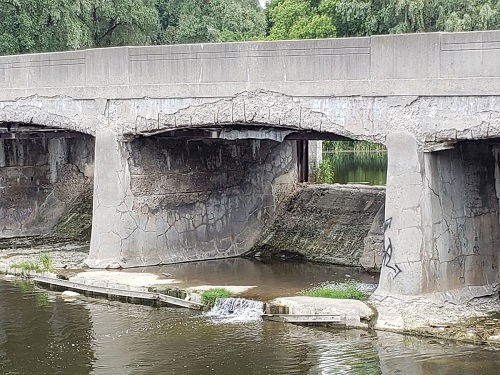 Monday, September 30, 2024
Monday, September 30, 2024  Monday, September 30, 2024
Monday, September 30, 2024 
On a hot summer afternoon, the North Maitland River in Southwestern Ontario trickles lazily past crumbling concrete. The Gorrie Dam – what’s left of it –awaits removal.
Its destruction had been long foretold. Following a damaging flood in 1974, engineers concluded that neither its spillways nor its earthen dikes had been constructed properly; the silty sand and gravel on which they rested allowed water to seep through. An engineer from the Ministry of Natural Resources concluded that the dam would eventually fail.
In 2017, amid heavy rains leading to the second highest flows on the river in half a century, it finally did. Flood waters overtopped and eroded its emergency spillway, and damaged its concrete structure.
Luckily, this failure unfolded gradually; it didn’t release a massive pulse of water that might have damaged other infrastructure downstream. As it was, other owners throughout the area were struggling to prevent failures of their own dams, a fate that was narrowly avoided.
Such incidents will likely arrive more frequently as Canada’s aging dams continue on a collision course with a warming climate.
There are more than 14,000 dams across Canada, with significant concentrations in Quebec, Ontario and British Columbia. Many date from the early and mid-20th century. While some are well-maintained and were built to withstand extreme events, others have deteriorated beyond hope of restoration.
They are at risk of failing even during moderate rainfall, let alone the massive deluges that are becoming increasingly commonplace.
The extent of the problem is obscured by a massive data gap. Dams fall largely under provincial jurisdiction, and while the rigour of supervision varies considerably, most provinces publish little information that could be used to identify poorly maintained dams, or assess what might happen if they fail.